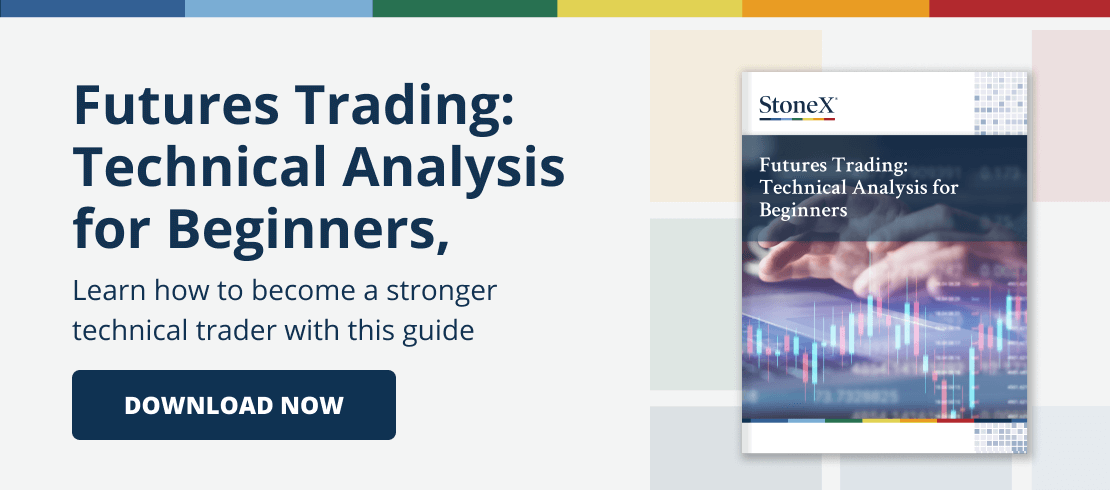Volume and Open Interest
Volume and Open Interest can be a barometer of future activity and direction. Volume measures the number of contracts that exchanged hands during the trading session. It measures market activity. Open Interest is the total number of outstanding contracts. It gauges market participation.
FutureSource tracks volume and open interest on an individual delivery month and total symbol basis. For example, the study on a daily November Soybean chart only displays the volume and open interest figures for the November contract.
VOI does not have straight and simple trading rules. VOI is a measurement of the ebb and flow of the underlying market. Are new buyers/sellers entering the market? Are traders liquidating their positions? Does VOI confirm the trend or suggest a change in trend? The VOI data creates a lot of questions but not many simple answers to those questions.
The histogram (vertical lines) represent the volume on a daily basis, and the line which spans the chart represents the open interest. The price values for Volume appear at the far left margin of the study pane, while the price values for Open Interest appear in the chart’s price axis at the right. Traditionally, traders have used the rules listed below for volume analysis.
Traditional rules for volume analysis:
- If prices are up and volume and open interest are rising, the market is strong.
- If prices are up and volume and open interest are declining, the market is weak.
- If prices are down and volume and open interest are rising, the market is weak.
- If prices are down and volume and open interest are declining, the market is strong.
Other rules you might find worthwhile:
- In a bull market, volume has a tendency to increase on rallies and to decrease on reactions.
- In a bear market, volume has a tendency to increase on declines and decrease on rallies.
- Trading volume usually increases dramatically at tops and bottoms in the price chart.
At first, it appears these trading rules are in conflict. Actually, they imply very similar market conditions. Volume and open interest information is often a quite useful indicator, especially when the trading volume and open interest deviate from expected patterns. This includes contra-seasonal moves, volume patterns versus chart patterns, and divergence.
You can use volume and open interest to determine market action. You must watch for divergence between price direction and volume. For instance, if the market makes new highs while volume falls short of the previous high, it implies the market is getting weaker. In short, fewer buyers are willing to enter the market at current price levels.
Computing Volume and Open Interest
This study has no computations. The values for the volume and open interest are transmitted from the exchanges. However, the actual volume and open interest figures are always one day behind price information. You will not know Monday’s volume and open interest until Tuesday at approximately noon (for U.S. markets – central time). That is due to the exchanges and their reporting requirements.
View Other Technical Analysis Studies
- Bollinger Bands
- Commodity Channel Index
- Crack Spread
- Crush Spread
- Default
- Directional Movement Index
- Envelope
- Exponential Moving Average
- Exponential Oscillator
- High Low Moving Average
- Highest High / Lowest Low
- Historic Volatility
- Keltner Channel
- Least Squares Linear Regression
- Line Oscillator
- Momentum
- Moving Average
- Moving Average Convergence Divergence
- Moving Standard Deviation
- Open Interest
- Oscillator
- Parabolic Stop and Reversal
- Rate of Change
- Relative Strength Index
- Smoothed Moving Average
- Smoothed Oscillator
- Stochastic
- Variable Moving Average
- Volume
- Volume and Open Interest
- Weighted Close
- What is the Slow Stochastic Oscillator?
- Williams’ %R

